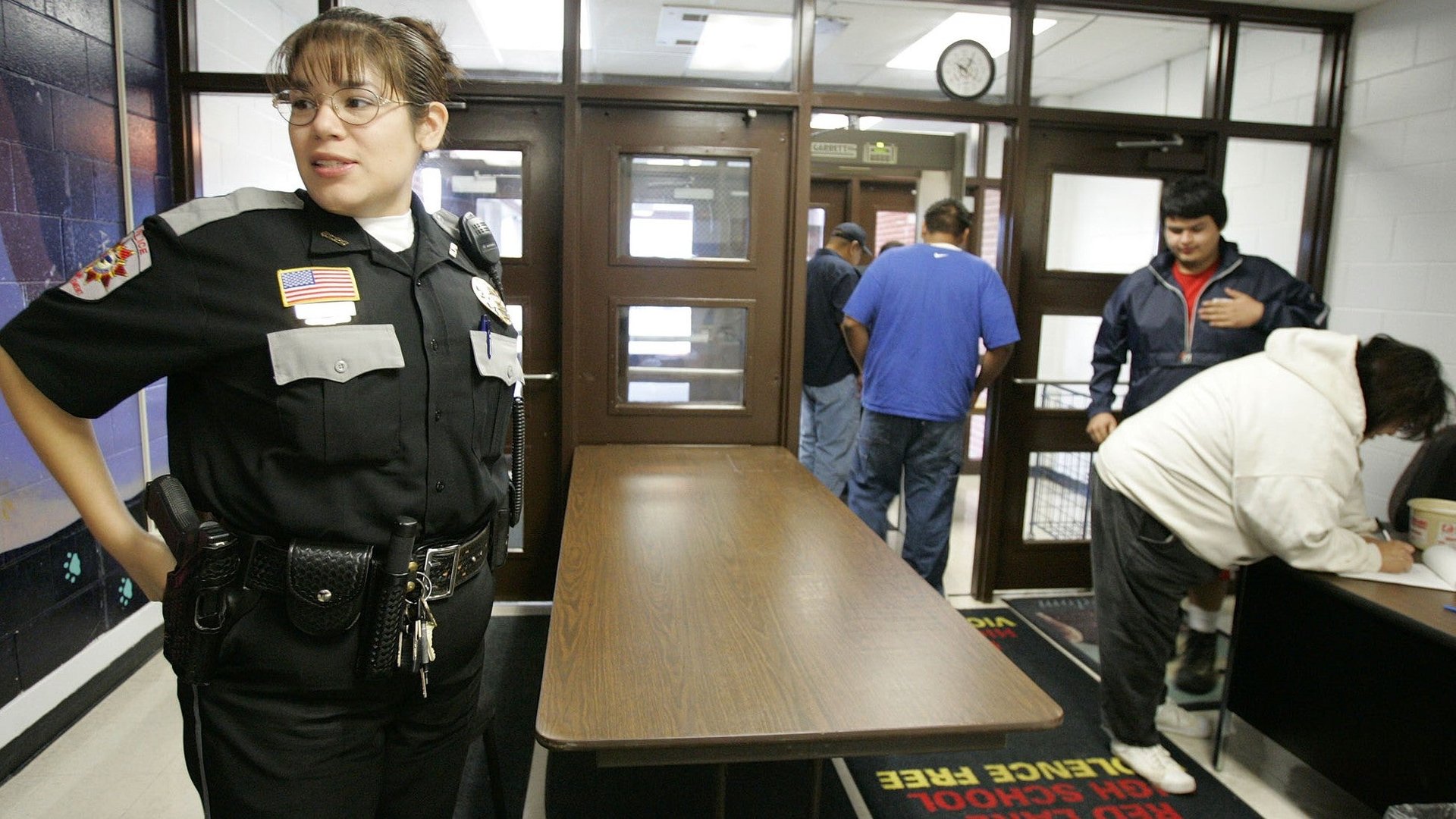One big factor determines whether a misbehaving kid sees a doctor or a cop
It is well documented that America disproportionately jails its minorities. And according to new research, this racial bias in punishing transgressions starts early on, in schools which treat students with behavioral problems differently: “criminalizing” black kids, and “medicalizing” whites.


It is well documented that America disproportionately jails its minorities. And according to new research, this racial bias in punishing transgressions starts early on, in schools which treat students with behavioral problems differently: “criminalizing” black kids, and “medicalizing” whites.
American schools focus on safety and high test results, both of which are tied to their funding. In order to protect both, they often use methods that render students with behavioral issues as either criminals or in need of special attention. An analysis of nearly 60,000 American schools published in the journal Sociology of Education shows that racial composition plays an overriding factor in the decision.
In predominantly black schools, children are punished for inappropriate behavior with instruments of the criminal justice system or ones that mirror it–zero tolerance policies, expulsions, suspensions and police referrals. By contrast, students who misbehave in predominantly white schools get diagnosed with an attention deficit disorder or learning disability, providing them with assistance and allowing them more time on tests.
The study looks at how this racial disparity plays out across affluent and economically disadvantaged districts. Generally, schools in poorer districts use more criminalizing methods, because having a police officer, paid for by the local precinct is cheaper than hiring a mental health professional. But even less affluent schools where the proportion of white students is high tend to treat their students’ misbehavior as a medical issue, David Ramey, criminologist and sociologist at Penn State, and author of the study, tells Quartz.
What may be most indicative of this racial disparity is what goes on in districts that are well off, where teachers and school administrators have more autonomy. “The racial discipline gap, the black-white discipline gap, is more pronounced in affluent districts,” Ramey says. He adds that for instance, a predominantly black school in a rich area, which should be able to afford learning disability assistance, will still punish their students like criminals.
Part of this is because of a fundamental mistrust of the mental health system in non-white communities, the study says. But it is also a deeply ingrained bias on the part of the teachers, and administrators.
“It’s a self-perpetuating cycle,” according to Ramey. There’s a racial label attached to an adult criminal, which teachers and administrators project onto African American kids, he says. Black students with behavioral issues are suspended, they miss out on classwork, often get left back and never finish high school–making them highly vulnerable to ending up in the criminal justice system. This is what experts call the “school-to-prison pipeline.”
“When we are thinking of making schools safe, we are using police officers, metal detectors, uniforms, so the importance of the criminal justice system is reproduced in school,” Ramey says. On some level, the study says, this is no different from how sociologists say school perpetuated social class in the early twentieth century, tracking working class students into the factory workforce, with vocational training and an emphasis on consistency and efficiency, and preparing middle-class students for college.